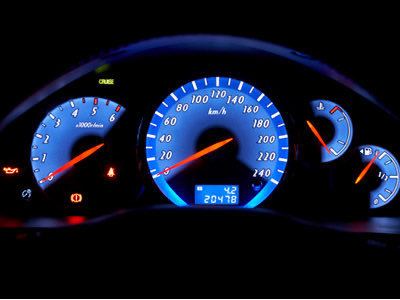Dashboards are often what customers ask for.
They are rarely what customers need.
If you’re building a dashboard, it’s likely your user research wasn’t finished.
They are rarely what customers need.
If you’re building a dashboard, it’s likely your user research wasn’t finished.
Dashboards report on current status.
Users don’t act on status.
They act on change in status.
Dashboards are passive when the user needs something active.
They are a failure before it happens.
https://twitter.com/wsiebold/status/1293016620214833154?s=21">https://twitter.com/wsiebold/... https://twitter.com/wsiebold/status/1293016620214833154">https://twitter.com/wsiebold/...
Users don’t act on status.
They act on change in status.
Dashboards are passive when the user needs something active.
They are a failure before it happens.
https://twitter.com/wsiebold/status/1293016620214833154?s=21">https://twitter.com/wsiebold/... https://twitter.com/wsiebold/status/1293016620214833154">https://twitter.com/wsiebold/...
“Users wouldn’t ask if they didn’t need them.”
Oh, there’s a need alright.
Dashboards aren’t a need. They are a solution. And, often, the wrong one.
Learn more about the problem and a better solution will likely present itself.
https://twitter.com/charliebarnes_1/status/1293103957758402561?s=21">https://twitter.com/charlieba... https://twitter.com/charliebarnes_1/status/1293103957758402561">https://twitter.com/charlieba...
Oh, there’s a need alright.
Dashboards aren’t a need. They are a solution. And, often, the wrong one.
Learn more about the problem and a better solution will likely present itself.
https://twitter.com/charliebarnes_1/status/1293103957758402561?s=21">https://twitter.com/charlieba... https://twitter.com/charliebarnes_1/status/1293103957758402561">https://twitter.com/charlieba...
Dashboards are often a designer’s response to not understanding the full scale of a complex problem ecology.
In systems design, a dashboard is an attempt to understand the system interactions. Unfortunately, it rarely works.
https://twitter.com/develuxiness/status/1293161625613217793?s=21">https://twitter.com/develuxin... https://twitter.com/develuxiness/status/1293161625613217793">https://twitter.com/develuxin...
In systems design, a dashboard is an attempt to understand the system interactions. Unfortunately, it rarely works.
https://twitter.com/develuxiness/status/1293161625613217793?s=21">https://twitter.com/develuxin... https://twitter.com/develuxiness/status/1293161625613217793">https://twitter.com/develuxin...
At best, a dashboard is an intermediate stopgap to understanding the problem dynamics.
Give the user a temporary dashboard and study how they use it.
Unfortunately, most projects deliver the dashboard and never study the behaviors that come from it.
Give the user a temporary dashboard and study how they use it.
Unfortunately, most projects deliver the dashboard and never study the behaviors that come from it.
People keep bringing up car dashboards, so let’s take them apart for a moment.
Most of what’s in the dashboard isn’t needed for driving the car. The tachometer and temperature gauges, for example, are vestigial to today’s driving experience.
Most of what’s in the dashboard isn’t needed for driving the car. The tachometer and temperature gauges, for example, are vestigial to today’s driving experience.
Drivers do use the gas gauge and speedometer. However, that are also a holdover from a time when cars were dumber.
Your don’t need to know how fast the car is going. You need to optimize your speed for safety.
Your don’t need to know how fast the car is going. You need to optimize your speed for safety.
Similarly, you don’t need to know how much gas is left. You need to know if you have enough fuel to get to your destination.
Today’s cars are (or can be) smarter. Waze tells me if I’m driving too fast. Why can’t my car? Why would it even let me drive too fast?
Today’s cars are (or can be) smarter. Waze tells me if I’m driving too fast. Why can’t my car? Why would it even let me drive too fast?
If Waze had access to the fuel sensor, it could tell me if I’ll need gas during the trip. It could even route me to the cheapest gas station enroute.
This could be car intelligence. If the car did these things (see Autonomous Vehicle technology), I wouldn’t need the guages.
This could be car intelligence. If the car did these things (see Autonomous Vehicle technology), I wouldn’t need the guages.
Many folks in this discussion seem to think that I believe there’s a better design solution than a dashboard.
I don’t.
I believe there’s a better user experience than what dashboards provide their users, but the UX will depend on what decisions the dashboard tries to afford.
I don’t.
I believe there’s a better user experience than what dashboards provide their users, but the UX will depend on what decisions the dashboard tries to afford.
Dashboards, in their simplest form, are information displays.
Users either absorb the information or they ignore them.
In either case, they are then making a judgement and acting upon it.
Dashboards leave room for tremendous error because users didn’t react appropriately.
Users either absorb the information or they ignore them.
In either case, they are then making a judgement and acting upon it.
Dashboards leave room for tremendous error because users didn’t react appropriately.
If we want to eliminate those errors, we need to eliminate the dashboard and replace it with something that actually assists (for some value of assistance >1% and ≤100%) the decision making process.
That might be full-on automation, or it could just be decision support.
That might be full-on automation, or it could just be decision support.
In any case, the “replacement” for the dashboard is a decision support mechanism of some sort.
There won’t be a “best practice,” because this is a complex systems issue.
You can’t have best practices in complex systems. They are only helpful in complicated or simple systems.
There won’t be a “best practice,” because this is a complex systems issue.
You can’t have best practices in complex systems. They are only helpful in complicated or simple systems.

 Read on Twitter
Read on Twitter


